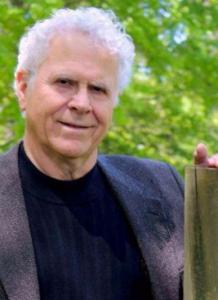MONROEVILLE, PA, USA, February 14, 2024 /EINPresswire.com/ — Thomas N. of Wheat Ridge, CO is the creator of the 4 Phase Motor and Generator, a multipurpose motor designed to generate power more efficiently than single, 2-, and 3-phase motors. The generator can produce electricity in an environmentally conscious manner. The generator systems move in a direction that is constant, overcoming the resistance of gravity and accelerate in a direction that is constant. The 4-Phase Motor Device can assist with moving payloads in space with electrical energy, as there are no rocket fuel stations in space, to make use of the Higgs field that the entire universe lives in.
4 Phase Motor and Generator is comprised of a stator wall and an armature. The stator wall includes four phases of functional operation. Specifically, the stator wall features a circular or cylindrical shape with eight stator slots and four pole groups. Further, four of the stator slots on one side of the stator wall may correspond to the other four of the stator slots on and opposing side of the stator wall. During use, rotation of the armature causes the four pole groups to alternate in activation between N stator slots and S stator slots. Moreover, in any given configuration, only six of the eight poles are actively coupled. Such a four-phase generator would consume less electrical energy than existing one phase, two phase, and three phase motors and thereby increases energy efficiency.
A 3-phase motor is a type of electric motor that operates on a three-phase alternating current (AC) power system. Three-phase systems are common in industrial and commercial settings due to their efficiency and ability to deliver a constant power output. In a 3-phase motor, the electrical energy is supplied in three separate phases, each with its own alternating current waveform. Innovation is required in this field, and the 4-Phase Motor and Generator offers a more versatile and environmentally friendly option to generate electricity in different industries, even in astrophysical applications. Saving power and increasing efficiency in large-scale applications, like those found in industrial and government applications, would significantly benefit any manufacturer looking to innovate within this field.
Moving payloads in outer space with electrical energy instead of using rocket propulsion is important for asteroid mining, space junk problems, and most importantly to assist with He3 Lunar Mining as Global Warming is going to out of control within 5 to 15 years. Unlike Earth, which is protected by its magnetic field, the Moon has been bombarded with large quantities of Helium-3 by the solar wind. It is obvious that this isotope could provide safer nuclear energy in a fusion reactor since it is not radioactive and would not produce dangerous waste products.
Simply put we just use a large magnifying glass to heat up the dirt on the surface of the Moon, then use a solar powered air compressor to compress the Helium 3 into aluminum bottles with shut off valves and load them into space shuttle craft and bring the botted Helium 3 back to earth. This will also create millions of jobs to retrofit the existing power plants to fusion reactors. This will stop the need for fossil fuels and coal production as Global Warming is getting out of control.
Supersymmetry is a theoretical framework in physics that suggests the existence of a symmetry between particles with integer spin and particles with half-integer spin. It proposes that for every known particle, there exists a partner particle with different spin properties. The theory predicts that at least five types of Higgs bosons exist. In a supersymmetric rotor, the mass is distributed eccentrically around the axis of rotation. This means that the total angular momentum of the rotor is not conserved. The reason for this is that the laws of physics are not symmetrical under rotations in the supersymmetric rotor. This is because the mass distribution is not symmetrical. As a result, the total angular momentum of the rotor can change as it rotates. In a regular rotor, the laws of physics are symmetrical under rotations, so when the supersymmetric rotors revolve about the center axis of rotation the total angular momentum of the supersymmetric rotors are not conserved, resulting in the systems moving in a direction that is constant. Thus, we can move payloads in space using electrical energy instead of rockets. The conservation of angular momentum applies to all symmetrical operations about a center axis of rotation only. It does not apply to supersymmetric rotors.
Thomas filed his Utility Patent with the United States Patent and Trademark Office (USPTO) and is working closely with InventionHome, a leading invention licensing firm, to sell or license the patent rights to his 4 Phase Motor and Generator product. Ideal licensing candidates would be U.S. based product manufacturers or distributors looking to further develop and distribute this product innovation.
Companies interested in the 4 Phase Motor and Generator can contact InventionHome at [email protected]. Inventors currently looking for assistance in patenting, marketing, or licensing their invention can request information from InventionHome at [email protected] or by calling
1-866-844-6512.
About InventionHome®
InventionHome is a leading invention and product licensing firm focused on helping inventors and entrepreneurs through the invention and patent process with the goal of licensing or wholesaling client inventions. For more information, email [email protected] or visit https://www.inventionhome.com.
InventionHome
InventionHome
+1 866-844-6512
[email protected]
![]()
Originally published at https://www.einpresswire.com/article/688426764/inventionhome-product-developer-creates-4-phase-motor-and-generator-to-move-payloads-in-space-with-electricity





